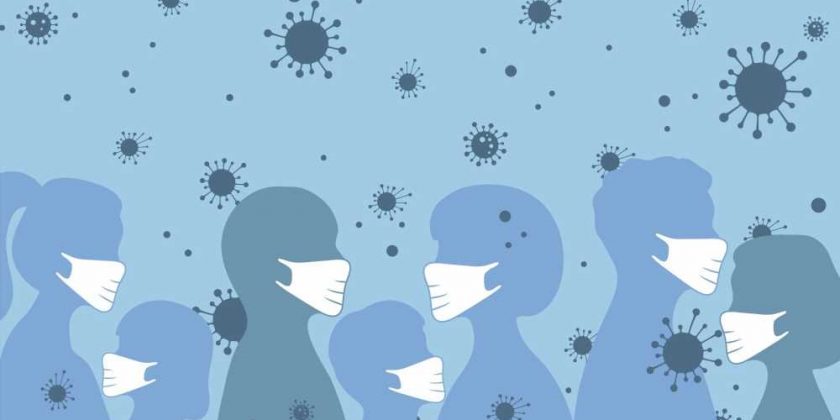In a recent research letter published in the Emerging Infectious Diseases journal, researchers analyzed the contact risks for severe acute respiratory syndrome coronavirus 2 (SARS-CoV-2) spread to medical professionals in an infection outbreak in a hospital ward.

Background
In one prior investigation, Rudberg AS et al. discovered that healthcare workers (HCWs) who had coronavirus disease 2019 (COVID-19) patient interaction had higher SARS-CoV-2 seroprevalence than those without COVID-19 patient contact.
On the other hand, a previous study by Braun KM et al. found that medical personnel were more likely to contract SARS-CoV-2 from someone outside the hospital or coworkers than from COVID-19 patients. Hence, there exists a discrepancy regarding COVID-19 contact risks for HCWs.
About the study
In the current research, the investigators estimated the probability of various SARS-CoV-2 exposures among medical professionals during a COVID-19 outbreak in a 26-bedded hospital ward in Switzerland with 50 HCWs from October to November 2020. The trial period coincided with the peak of the second SARS-CoV-2 wave in Switzerland.
Unfortunately, throughout the 43-day outbreak term, phylogenetical or epidemiological reconstruction of SARS-CoV-2 transmission networks was not possible. Alternatively, the team employed statistical modeling to evaluate and contrast coworkers and SARS-CoV-2 patients as probable sources of COVID-19 across HCWs.
The researchers explored three potential risk variables as exposure routes for healthcare personnel. The assumed risk factors were working shifts in the infectious timeframe of coworkers later discovered SARS-CoV-2-positive and attending infectious COVID-19 patients, differentiated by whether using isolation precaution measures (IPMs) or standard precaution measures (SPMs) while engaging with contagious SARS-CoV-2 patients.
The scientists defined that a person with COVID-19 was contagious from 48 hours before the onset of symptoms, or from the time of a positive test if they were asymptomatic, until around two weeks or two days after the resolution of symptoms, whichever came later. HCWs were tested if they displayed COVID-19 signs or during a staff assessment on day 31 of the SARS-CoV-2 outbreak.
The authors determined exposure risk scores for a specific day and interaction type under the assumption that COVID-19 transmission happened two to 10 days before the onset of symptoms or a positive test. They included all days HCW worked during the SARS-CoV-2 outbreak except HCW workdays following COVID-19 recovery.
The researchers calculated hazard ratios leveraging exposure risk ratings as predictors. Besides, they used time-updated multivariable and univariable Cox proportional-hazards models with time to SARS-CoV-2 infection as the outcome. In addition, the team conducted a sensitivity evaluation for absence or presence on the ward.
The Zurich Cantonal Ethics Commission exempted formal ethical review since the current assessments were elemental of an outbreak examination. Further, the 12 SARS-CoV-2-positive patients in the hospital ward were included in 1,118-patient research examining the incidence of nosocomial COVID-19 in a tertiary care facility.
Results
The team found that 38% of HCWs had SARS-CoV-2 infection in the research period. IPM was utilized for 11 of the 12 COVID-19 patients on the ward, and SPM was adopted for seven patients till a SARS-CoV-2 diagnosis was made; one patient was diagnosed only post-discharge. Supporting the findings of prior studies, multivariable and univariable models showed that COVID-19 within HCWs serving on the ward was linked to shifts completed with coworkers later discovered to be COVID-19-positive.
The study results indicated no clear link between COVID-19 among HCWs and using IPM when in touch with patients. This finding might be explained by extensive training, widely accessible personal protective equipment, and standard safety procedures when dealing with COVID-19 patients. SARS-CoV-2 infection was linked to SPM use when managing COVID-19 patients, but only in the univariable model, suggesting a possible risk.
Nevertheless, the scientists could only assume whether the current discovery of elevated risk was due to the SPM concept or how it was executed. They mentioned that IPM might add additional levels of safety not just through its enhanced protective components but also by making HCWs more aware of the increased need to take precautions.
The likelihood of SARS-CoV-2 transmission increased when ward contact was considered, including but not restricted to social work contacts. HCWs were required to maintain a safe distance, wear masks, and sanitize shared surfaces, although the authors believe that 100% compliance was always improbable. Additionally, it was unknown if social interactions between coworkers before and after work may favor SARS-CoV-2 transmission.
Conclusions
Overall, the team discovered that while working shifts with COVID-19 pre-symptomatic healthcare colleagues did raise the probability of COVID-19 among health professionals, interacting with isolated SARS-CoV-2 patients did not. The present work provides more proof of the SARS-CoV-2 infection likelihood for HCWs engaged with infectious patients and coworkers using SPM. The study findings emphasize how crucial it is to select protective gear appropriately and strictly adhere to safety procedures like IPM and SPM.
- Zeeb M, Weissberg D, Rampini SK, Müller R, Scheier T, Zingg W, et al. (2022). Identifying contact risks for SARS-CoV-2 transmission to healthcare workers during outbreak on COVID-19 ward. Emerging Infectious Diseases. doi: https://doi.org/10.3201/eid2810.220266 https://wwwnc.cdc.gov/eid/article/28/10/22-0266_article
Posted in: Medical Science News | Medical Research News | Disease/Infection News
Tags: Coronavirus, Coronavirus Disease COVID-19, covid-19, Healthcare, Hospital, Infectious Diseases, Personal Protective Equipment, Research, Respiratory, SARS, SARS-CoV-2, Severe Acute Respiratory, Severe Acute Respiratory Syndrome, Syndrome

Written by
Shanet Susan Alex
Shanet Susan Alex, a medical writer, based in Kerala, India, is a Doctor of Pharmacy graduate from Kerala University of Health Sciences. Her academic background is in clinical pharmacy and research, and she is passionate about medical writing. Shanet has published papers in the International Journal of Medical Science and Current Research (IJMSCR), the International Journal of Pharmacy (IJP), and the International Journal of Medical Science and Applied Research (IJMSAR). Apart from work, she enjoys listening to music and watching movies.
Source: Read Full Article
